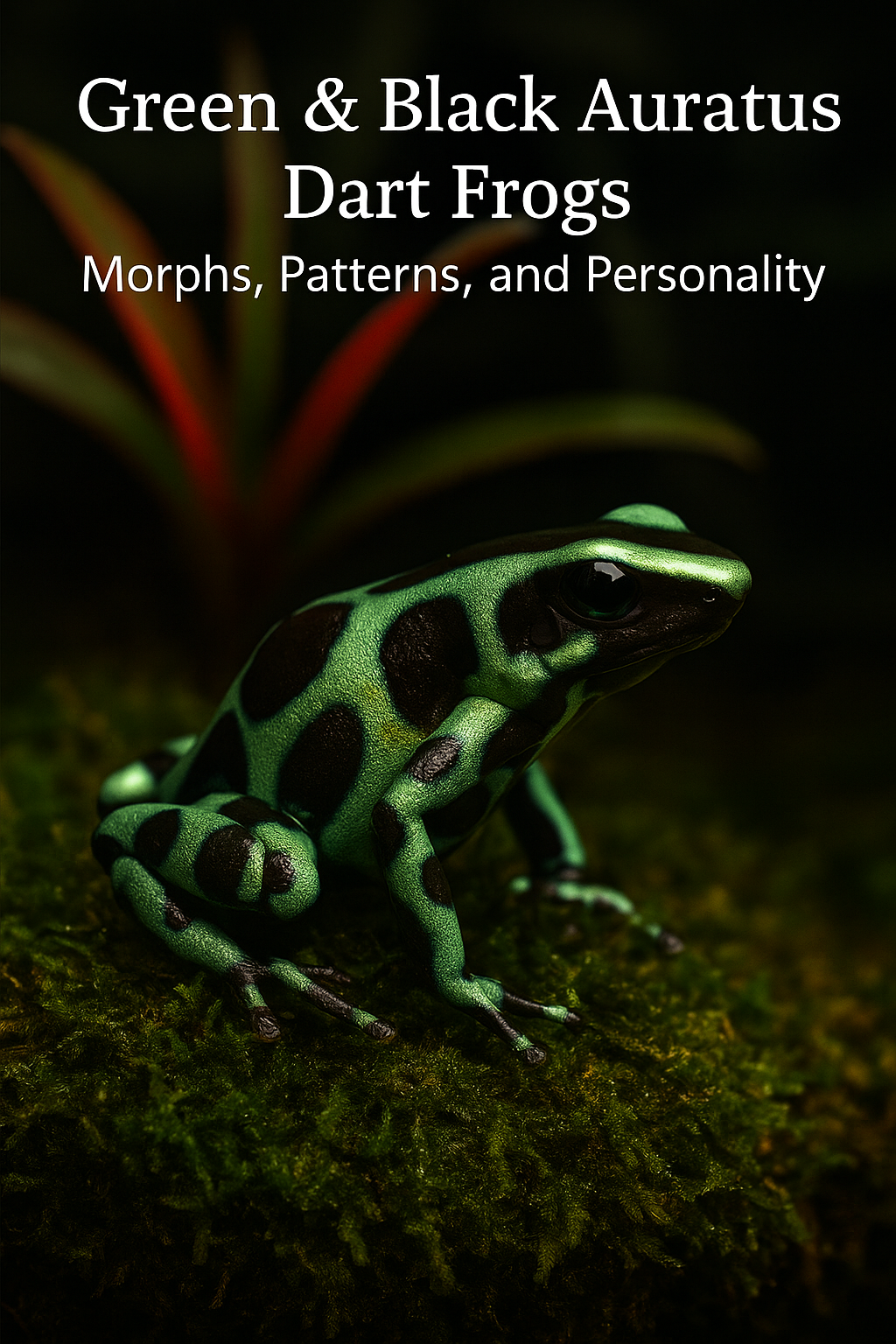Ameerega bilinguis Dart Frog for Sale UK
Ameerega bilinguis, sometimes known as the Ecuador Poison Dart Frog, is a medium-sized and striking terrestrial species recognised for its glossy black body contrasted with vivid blue or turquoise limbs and flashes of red or orange on the back. These frogs are bold, active, and vocal—making them an excellent choice for anyone wanting a lively display species in a bioactive vivarium. They’re a rare find in the UK hobby, but truly rewarding to keep.
Origin & Distribution
This species originates from the humid lowland forests of Ecuador and northern Peru. They inhabit leaf-litter zones and rocky stream margins at altitudes between 300 and 900 metres, thriving in shaded rainforest conditions with constant moisture and dense undergrowth.
Size, Lifespan & Appearance
Adult Ameerega bilinguis reach around 30–35 mm in length—larger than most Ranitomeya species but still compact enough for a well-planted vivarium. They display metallic blue legs, jet-black bodies, and bright dorsal markings that vary from fiery orange to golden yellow depending on locality. In captivity, they can live 10–12 years with proper care and stable conditions.
Temperature & Humidity
Keep daytime temperatures between 23–26 °C, with a slight night-time drop to 21 °C. Humidity should remain high, ideally 80–100 %. Regular misting twice daily or an automatic system will help maintain their preferred moisture levels. Ensure good airflow to prevent mould growth while keeping the substrate damp but not waterlogged.
Vivarium Setup
Being a terrestrial species, Ameerega bilinguis prefers more ground space than height. A 60 × 45 × 45 cm enclosure is ideal for a pair or small group. Provide a deep leaf-litter layer, patches of sphagnum moss, and plenty of cork bark hides. Incorporate live tropical plants such as Pothos and Philodendron to retain humidity. A vented 3D vivarium with lighting and microfauna support works beautifully for this species. They appreciate running water or shallow pools that mimic stream edges in their natural habitat.
Diet
Feed daily with small live foods such as fruit flies, springtails, and micro-crickets. Larger adults will also take small isopods or bean beetles. Always dust food items with All-in-One Vitamin & Mineral Dust to provide balanced nutrition. Their active feeding behaviour makes them entertaining to watch as they explore the vivarium floor.
Social Behaviour
Ameerega bilinguis can be kept as pairs or trios, though males can become territorial if confined to small spaces. They are confident, often out in the open during daylight, and adapt quickly to new surroundings. Their natural boldness and strong appetite make them ideal for display enclosures where constant activity is desired.
Calling & Activity
Males have a distinct, sharp chirping call that can be heard clearly but isn’t overwhelming. They call frequently, especially after misting or during humid evenings, adding an authentic rainforest atmosphere to any room. Their calls are a reliable indicator that the frogs are comfortable and thriving.
Breeding & Parental Care
Breeding Ameerega bilinguis is straightforward once a pair has bonded. The female lays eggs on smooth leaves or within small caves near the ground. The male guards the clutch, keeping it moist, and later transports the hatched tadpoles on his back to shallow water pools. Tadpoles feed on detritus and small particles rather than unfertilised eggs, so they’re easier to raise than obligate egg-feeders. A shallow water dish or leaf axil within the enclosure often suffices for successful rearing.
Visibility & Boldness
This is a very bold and active species. They spend much of the day foraging in open areas and rarely hide once settled. Their bright colours and regular calling make them one of the most exciting dart frogs to observe in a tropical setup. They’re particularly recommended for keepers who enjoy interaction and visual activity.
Availability in the UK
Ameerega bilinguis dart frogs for sale in the UK are relatively uncommon but occasionally available from specialist breeders. Frogfather UK works with ethical, captive-breeding programmes to offer healthy specimens when possible. They make a superb choice for keepers wanting a slightly larger, more vocal frog that remains visible and active throughout the day.
FAQs
Are Ameerega bilinguis good for beginners?
They’re suitable for keepers with some dart frog experience but can be managed by careful beginners using automatic misting and good monitoring.
How loud is their call?
The male’s chirping call is clear but moderate — pleasant and not too intrusive indoors.
Can Ameerega bilinguis live in groups?
Pairs or trios can cohabit in larger vivaria with ample cover to avoid territorial conflicts.
Do they show parental care?
Yes. Males guard eggs and carry tadpoles to water sources — though they don’t feed them directly like Ranitomeya species.



